Specifying Silicone Sealants: Providing Weather Sealing and Flexibility Between Building Components
Silicone sealants offer long-term durability under extreme weather and building conditions for both new construction and renovation applications.
![]() Continuing Education
Continuing Education
Use the following learning objectives to focus your study while reading this month’s Continuing Education article.
Learning Objectives - After reading this article, you will be able to:
- Differentiate between silicone and organic sealant chemistries.
- Explain the functions of non-structural and structural glazing sealants and select appropriate sealing systems for new construction and renovation applications.
- Specify appropriate requirements, products, and installation for weather-sealing vs. structural sealant joints.
In very basic terms, what is the primary role of a sealant? Fundamentally it is to keep unwanted water and air from infiltrating into a building, particularly along joints and seams of building materials. This function is compounded by the many different types of materials used on a building's exterior, all of which have different coefficients of thermal expansion. This means that as the temperature changes, the different materials move at different rates. For example, aluminum moves at twice the rate of glass and concrete. When these materials abut each other at window perimeters and other locations, a sealant that can accommodate the range of movement (expansion and contraction) of each of these materials is required to keep the joints, and subsequently the building, watertight. It is worth noting that this role of stopping water and air intrusion is the fundamental characteristic of a "sealant" as opposed to the decorative or interior finishing roles of "caulking."
Introduction to Sealants
Properties of Sealants
In specifying sealants, there are some important properties that need to be considered.
• Adhesion: First, and perhaps most important, is the ability of the sealant to adhere or permanently "stick" to different types of building materials. Every sealant, depending on its formulation, has a different adhesion profile. Certain sealants adhere better to porous materials or substrates, while other sealants adhere better to non-porous materials. In many cases, the sealant manufacturer will require the use of a primer to enhance a sealant's adhesion to a specific material by acting as an intermediary between the adhesion properties of the sealant and the characteristics of the substrate material.
 |
Solano County Government Center, Fairfield CA (See Solano County case study on p.5 of this course.) Photo © 2008 Michael O'Callahan |
Â
• Modulus is used in terms of sealants to identify the degree of elasticity that different sealants exhibit. This is important because it helps determine the stress-strain relationship between the joint and substrates. A high-modulus sealant is a stiffer sealant. This type of sealant usually generates more stress within the joint and bond line during expansion and contraction or conversely resists high applied forces to reduce the deflection of the joint.
High-modulus sealants are often used where strength is important, such as in structural glazing where a sealant is used to adhere glass to the outside of a building. A low- or ultra-low modulus sealant has high elasticity that allows the sealant to expand with minimal force. Typically these sealants are used with substrates that may be sensitive to high stress (EIFS, composite cladding systems, etc…) to reduce the potential for damage to the substrate during joint movement. Medium modulus sealants bridge the realm of available sealants and are commonly used in weatherseal applications; but, can be used in structural applications depending on the needs of the application and performance characteristics of the sealant.
• Movement capability is usually a function of modulus and indicates the ability of the sealant to perform through the life of the joint dependent on the expected movement of the joint. Typically, high-modulus sealants have lower joint-movement capability and low-modulus sealants have higher movement capability. Low-modulus sealants used for weather sealing may have movement capability of up to +100 percent expansion (stretching) and -50 percent contraction (compression) of the original joint width. Movement capability is determined through the ASTM C-719 test method.
• Durability. A sealant may have excellent physical properties, initially, but what will happen to those properties after 5, 10 or 20 years on the building? Also, what effect will temperature have on the sealant's movement capability and modulus? The ability of a sealant to be durable enough to still provide air and water infiltration protection over time is clearly an important property to consider.
Distinction Between Organic Sealants and Silicone Sealants
Among sealants, there are two broad categories of sealant
chemistries:
• Organic sealants use a chemical polymer backbone
consisting of carbon-based or organic polymers
(-C-C-O-C-C-). Examples of organic sealants include single and multi-component
polyurethane sealants, polysulfide, acrylic and silyl terminated polyether or more commonly MS or modified silicones. These sealants do not contain silicone polymer.
• Inorganic sealants are the other type of sealant. An inorganic sealant does not have a carbon based or organic backbone, thus is a non-carbon-based polymer (-Si-O-Si-O-Si-). Silicone is an example of an inorganic sealant because it uses a polymer which links silicon and oxygen atoms. This is called siloxane
or silicone.
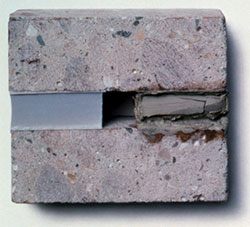 |
This photo shows the negligible impact of weathering on a silicone sealant (left) versus the degraded impact on an organic polyurethane sealant (right) after 3000 hours of accelerated weathering, which is equivalent to 3 to 6 years of actual outdoor weathering. Photo courtesy of Dow Corning Corporation |
Why is sealant chemistry important? It comes down to how the chemistry of each type of sealant performs on a building when it is exposed to UV rays from the sun. In the presence of UV light, a carbon based polymer or organic sealant will change properties and degrade over time. The Si-O bond of a silicone polymer, on the other hand, is stronger than the rays of the sun and will not degrade over time. There is not enough energy in ultraviolet (UV) light to degrade the Si-O bond of a silicone sealant.
Polyurethane sealants are one kind of commonly used organic sealants. They typically exhibit desirable initial properties in terms of adhesion, modulus, and movement and are readily available. However their durability over time is limited or even weak in that they degrade noticeably in the presence of UV light found in sunlight. This degradation may take several forms. In most cases, the sealant gets stiffer, reducing it's modulus as it ages. Since joint movement continues to occur in the building however, the sealant commonly fails cohesively, or tears within itself. As the polyurethane continues to harden, the sealant may also put more stress on the substrate material, causing adhesive failure of the sealant, or substrate delamination or spalling. The surface of the polyurethane sealant can also chalk, craze or crack. These surface cracks can propagate through the sealant and cause it to fail. A form of polyurethane sealant failure common in the 1990s is called reversion. In this instance, the polyurethane sealant initially cures and displays normal sealant properties; but after exposure to UV light, the polymer reverts to an uncured sealant state. The material appears to turn into chewing gum in the joint and no longer performs as a flexible sealant.
Drawing Coordination
 |
Typical "hourglass" shaped joint showing material substrate on either side filled first with a non-adhering backer rod then with sealant that fills the joint cavity with a slightly recessed front. Note that the sealant adheres only to the substrate material. Courtesy of Dow Corning Corporation |
Joints in building materials that require sealant installation are typically shown on drawing elevations, plans, and details. It is important, therefore, that the joint design is properly thought through and that sealant details are shown on the drawings. Basic guidelines for the design of weatherseals are reviewed in such places as ASTM C-1193 and other industry documents. The most common and best performing joint design uses an hourglass-shaped sealant profile. This joint shape is effective because the sealant depth of half of the joint width reduces stress on the sealant. The hourglass shape allows for maximum contact with the building materials along the sides of the joint. This reduces stress on both the sealant and the building material. In all cases, there should be at least ¼-inch contact on each joint surface in a moving joint. And the sealant should be installed to allow adhesion to only the two sides of the joint and not the third side, namely the back of the joint. Backer rod or bond breaker tape can be used to prevent such three-sided adhesion.
Other common joints include: fillet joints, where two perpendicular joints abut each other; bridge joints, which are typically used for restoration over failed weatherseals; and double weatherseals, commonly used in modern commercial construction.
Specifying Silicone Sealants
Using the basic background information above, many architects are choosing to specify sealants predominantly or even exclusively made from silicone. Using the standard "three part" format, such a specification will need to address the following information.
Part 1 - General Requirements and Standards
Putting the specification section in context, the points below focus the sealant work of a construction contract on high quality, long term performance.
• Coordination with other trades. Sealants are used to fill the gaps between other materials. It is worth noting and cross− referencing the specification sections that address those other building materials such as concrete, aluminum window frames, masonry, Exterior Insulation and Finish Systems (EIFS), etc.
• LEED and green building coordination. Sealants need to be made from low amounts of or no Volatile Organic Compounds (VOC) in order to comply with LEED requirements for indoor air quality. In addition, a properly sealed building helps to assure that the projected energy performance is actually achieved.
• Quality Assurance. Material and manufacturing quality assurance is based on manufacturing information and warranties. Installation is based on the skill and experience of installers. It is appropriate
to specify requirements for both the material and the installer,
therefore, to be sure that a quality job is produced.
• Testing standards and references. The relevant standards come from ASTM and SWRI. (See the on-line portion of this article for more information.)
• Pre-construction compatibility and adhesion testing (also may include mock-ups). Due to the critical weatherization nature of sealants and their long term requirements, it is more than appropriate to specify testing of the sealants before they are installed in the building. Testing should be done on joints of the actual building materials being used and witnessed by the specifier.
• Submittals. Product information should indicate full compliance with all specification requirements. Substitutions or use of "or equal" organic sealant products should be disallowed since they are not equal in terms of long term durability.
• Warranty. Manufacturers' and installers' warranties are reasonable to specify for at least 20 years.
Part 2 - Silicone Sealant Products
Typically, the deciding factor on which type of silicone sealant product to specify is based on the application, i.e., what types of materials are being sealed and what type of use.
New Construction Applications
• General weatherseal applications. For sealing common
building materials, (concrete products, metals, etc.) general purpose sealants with the following characteristics are typical:
• Ultra-low-modulus (+100 percent expansion /-50 percent contraction) joint sealant best for porous substrates and high joint movement locations.
• Medium modulus, (±50 percent expansion and contraction) general weatherseal sealant.
• Higher modulus, lower cost Sealant (±25 percent expansion and contraction) for less critical general weatherseal applications.
• Concrete sealant (±50 percent expansion and contraction) - a primerless product providing adhesion to most porous substrates, specifically concrete joints.
• Primers. There are many types of primers including film-forming primers and chemical treatment primers. The correct primer must be used appropriate to the application. Refer to the sealant manufacturer's guidelines for compatibility with both the sealant and building material types.
• Sensitive substrate applications. The single greatest negative voiced against silicone sealants is that they can stain a building. Staining is caused by non-reacted plasticizers or fluids in the sealant that can leach out of the sealant after it cures. Every sealant formulation, whether silicone or organic, is different. Any poorly formulated sealant can stain. Therefore, if staining is a concern, require that the sealant manufacturer test its sealant on an actual sample of your project's materials in accordance with ASTM
C-1248. You should ask for the results and a non-staining warranty from the manufacturer since silicone sealants that are specifically formulated for sensitive substrates have been introduced to the market. These sealants have no non-reacted ingredients and have been found to be
non-staining on even the most porous marbles. Additionally, some sealants generate a surface during cure that imparts a smooth matte finish that helps minimize dirt pick-up by the sealant. This reduced dirt pick-up surface minimizes streaking on adjacent substrates, such as metal panel systems, and keeps the building looking cleaner, longer.
• Exterior Insulation and Finish Systems (EIFS) applications. Silicone sealants have been broadly accepted for use with EIFS because silicone offers long-term durability, high movement capability and low modulus, particularly in cold temperatures. These features should be clearly specified and coordinated with the EIFS specification.
• Silicone surface coating applications. In addition to joint sealing, a broad weather seal coating over a surface is sometimes called for. A silicone elastomeric coating can be used on porous substrates such as poured or precast concrete, stucco, EIFS and brick. Silicone elastomeric coating is a water-based emulsion of silicone polymer. This product is similar to other acrylic elastomeric emulsions with the exception that the polymer is silicone instead of acrylic. Like acrylic elastomeric coatings, silicone elastomeric coating is 50 percent solids by weight and can be easily applied by roller, brush or spray. The coating is applied to a dry film thickness of 10 mils. Being water-based, the coating is VOC compliant. A silicone elastomeric coating, like a silicone sealant, offers long-term silicone flexibility. Since silicone is also inherently very permeable, water vapor is allowed to easily permeate the coating, allowing the building to breathe, while the silicone provides a tight seal against liquid water.
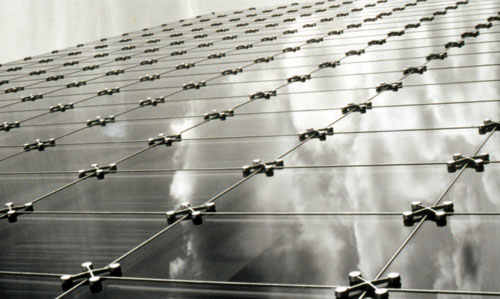 |
The world's first four-sided silicone structural glazing project. The metal ornamentation is for decorative purposes only, and does not provide structural support. Courtesy of Dow Corning Corporation |
Â
Finally, silicone is also inherently fungus and mildew resistant which is particularly useful in high-humidity environments.
• Parking structure applications. Silicone sealants designed especially for parking structures are available for use in
expansion joints, control joints, cove beads and vertical joints. These joints experience high UV exposure and high movement. Silicone sealants perform best under these conditions. Silicone sealants are available in two-part fast-cure formulations for dynamic joints on parking decks. For other joints, one-part
self-leveling or non-sag sealants may be appropriate.
• Non-structural glazing applications. Glass and glazing sealing such as glass-to-glass butt joints, silicone cap beads from the glass to the window frame, and internal seals in the window system are often overlooked but are often very critical to weather sealing. Many glazing systems provide for a window drainage system that can effectively control water when it enters the window system. The key is to be sure that such water control systems don't allow water or air infiltration to move into other parts of the building. Silicone is the best product to provide long-term window drainage system performance and guard against unwanted infiltration.
• Structural glazing applications. In structural glazing, silicone plays a different role and is used primarily for its strength as opposed to its weatherseal properties. In structural glazing, the sealant acts an adhesive, adhering the glass to the framing structure of the building. The sealant must be strong enough to allow windload stresses on the glass to be transferred to the structure but it must also be flexible to allow for differential thermal movement between the glass and metal and the sealant must have a long life. For these reasons, silicone sealants are the only sealants that can be used in structural glazing. It is common, then to specify such structural glazing sealant either directly with the glazing specification or in a separate section devoted to the specific needs of this type of system.
• Protective glazing applications. As a result of events like hurricanes, protective, laminated glazing has grown in popularity. New code requirements often dictate that glass openings remain intact during such events. To meet these requirements, a silicone sealant is often used to retain the laminated glass during missile impact and cyclic wind loads on the windows. Numerous window systems that use silicone sealants and laminated glass have successfully met these requirements. Further, the use of silicone sealant to anchor a protective film or laminated glass into a framed opening can help prevent flying glass debris from entering or falling from a building and injuring people. Similar to structural glazing applications, the specification for such sealant may be with the glazing or in a separate specialty section.
Renovation / Restoration Applications
• Restoration of existing joints. To restore joints containing
failed polyurethane or other organic sealants, complete
removal of the failed sealant is usually recommended. This
typically means grinding the joint surfaces down to the original substrate to prepare for the new field applied silicone sealant. Before installation, however, it is first recommended that field adhesion tests be performed on representative areas of the existing substrates to determine whether a new silicone sealant will adhere properly to the existing material and whether or not a primer
is required.
• Existing window applications. Another common restoration application is the use of new seals between the window frame and glass. The use of fillet beads and bridge joints should be used at all window joinery to prevent water from entering the window system. Bridge joints can be produced with wet sealant or
precured sealant.
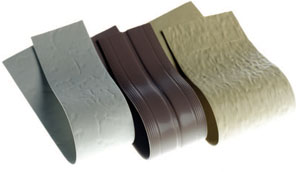 |
Pre-formed silicone seals, used for both new and remedial construction applications. |
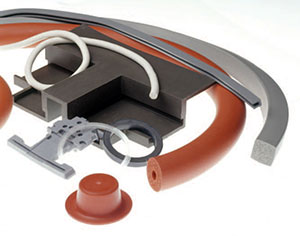 |
| Custom-designed, pre-formed silicone seals and gaskets, used for both new and remedial construction applications. |
• Precured silicone sealant applications. Precured and pre-formed silicone sealants were introduced in the early 1990s as an innovative way to restore failed polyurethane sealant joints. These products have found acceptance in joints where the original failed polyurethane sealant has reverted or is very difficult or costly to remove and can be used in difficult-to-seal joints such as splice joints in window systems or on roof parapet caps. These products are applied on the face of the joint adjacent to the existing sealant joint hence the existing sealant does not need to be removed under normal circumstances. Precured silicone sealants are available in a variety of standard and custom colors, in widths from 1 to 12 inches, textured for substrates such as EIFS, and notched to allow the strips to conform easily around corners. Recently, custom extrusions and molded precured silicone sealant designs have been introduced. These materials can be formed into molded boots or extrusions, then adhered with silicone sealants. These products have found acceptance in new curtainwall designs as well as restoration applications.
• EIFS restoration applications. EIFS is a building material that offers some unique challenges to proper sealant design and restoration. EIFS is a soft substrate; as a result, selection of the right sealant is critical to the material's performance. A high-modulus sealant can cause the EIFS coating to delaminate.
A sealant that is low modulus and stays low modulus when cold is much less likely to cause this problem. When an EIFS joint fails, it is often difficult to replace the failed sealant since EIFS coatings and mesh can be easily damaged if a grinder is used for removal. Instead, a solution that is gaining broad acceptance is the use of a precured silicone sealant bridge joint to span the failed joint. Then, the entire EIFS wall, including the precured silicone sealant, can then be coated with a silicone elastomeric coating to provide a cost-effective watertight wall. When used together, these products offer a unique solution to many of the problems associated with EIFS. Silicone offers long-term watertight performance, and the coating is highly permeable, allowing trapped moisture to escape.
Part 3 - Installation of Silicone Sealants
New Construction for Weatherseal Joints
Proper installation of sealant requires that certain steps be followed which should be articulated in the specification.
• First, the substrate materials must be clean, dry and frost-free. Depending on the substrate, this may require abrasion or solvent cleaning.
• Priming is then done for certain sealant/substrate combinations.
• After cleaning and priming, a backer material is installed. The backer rod allows the sealant to be installed and tooled properly and provides a proper joint shape. The backer rod should be sized at least 25% larger than the joint.
• The sealant is then installed and tooled. The sealant should completely fill the joint. Tooling ensures that the joint is filled to the proper joint shape and that the sealant wets out the sides of the joint.
• Finally, field adhesion testing should be conducted at the start of the job and throughout the project to verify sealant adhesion and to track the workmanship of the contractor. Final testing is performed on the sealant one or two weeks after it has been installed all with the results documented in a quality assurance log. Note that each sealant has different pass/fail criteria. Some sealants require a certain percent elongation, while others require cohesive failure of the sealant. Each manufacturer should publish its pass/fail criteria.
Restoration / Renovation
Similar to new construction installation, the proper sequence of steps must be followed:
For field-installed "wet joints" of new silicone sealant to replace old sealant:
• Grind off and remove the old sealant.
• Follow the steps above for new construction installation.
• Install a defined number of "test joints" first and assess them before starting the full restoration project.
For installation of pre-cured sealants where the existing joint seal is to remain:
• First, the substrate is cleaned as the manufacturer recommends.
• Next, a silicone sealant is applied in a uniform bead adjacent to the joint.
• Then, the strip of precured silicone sealant is pressed into the wet sealant. The contact areas should be at least 3/8-inch once the wet sealant is compressed.
• Once the sealant is cured, it chemically bonds to the substrate as well as to the precured silicone sealant strip.
• If appropriate, clean the entire surface and install a new
elastomeric silicone coating over the existing material and the restored joint.
In the end, it's all about the details and the skill of the contractors. Pay attention to both and you've gone a long way toward a truly quality installation that will help protect and preserve buildings for many years to come.
Additional Specification Details
Testing Standards for Sealants
Sealants testing has become comprehensive and well documented. Listed below are some of the most referenced and relevant standards for sealants. For copies of these standards, go to the ASTM website: www.astm.org.
• ASTM C-719 Movement Capability Test Method
• ASTM C-794 Adhesion in Peel Test Method
• ASTM C-920 Standard Sealant Specification
• ASTM C-1184 Structural Glazing Specification
• ASTM C-1193 Guide for Use of Sealants
• ASTM C-1248 Stain Test Method
• ASTM C-1299 Guide for Selection of Sealants
• ASTM C-1401 Guide to Structural Glazing
• ASTM C-1472 Guide for Calculating Joint Movement
• ASTM C-1481 Guide to Use of Sealants with EIFS
In addition to ASTM testing, the trade association that oversees sealants is the Sealant Waterproofing & Restoration Institute (SWRI). (www.swrionline.org). According to their website, "SWR Institute is an international trade association that represents the commercial sealant, waterproofing and restoration construction industry. Our members are some of the most experienced and qualified contractors, manufacturers and design professionals in the industry. Through our educational programs and publications, our members promote industry-wide standards of application and products. The members of SWR Institute are very active and are constantly striving to advance our industry and the quality of work that is performed." In specifying sealant and coating products the SWRI acknowledges that "manufacturer's product performances claims can, at times, be either confusing, incomplete, or misleading - especially when trying to compare different sealant and wall coating products." The SWR Institute has therefore implemented a "Validation Program" as a means to help alleviate the confusion. This requires that manufacturers independently submit material to be independently tested to determine "whether they perform as stated by the manufacturer and to industry standards. Once a product passes the validation process, SWR Institute then grants its Validation Seal and provides the test data in a clear and concise manner." Hence calling for products that carry the SWR Institute Seal of Validation is entirely appropriate in silicone sealant specification writing.
Sealant Schedule
As with many specification sections, a summary schedule that identifies where to use different types of relevant products helps contractors and designers quickly see the choices made. Using a Sealant schedule to help illuminate a specification can be a useful tool for communicating and summarizing the types of products that are being called for on a particular project. The information below can be useful in creating such a schedule:
General Purpose Silicone Sealant for Use as a Weather Seal
• Ultra-low-modulus expansion (+100/-50 percent) higher joint movement sealant − particularly good for porous substrates
• Medium modulus, (±50 percent) general weatherseal sealant
• Higher modulus weatherproofing Sealant (±25 percent) − for low joint movement or non-critical locations
• Concrete Sealant (±50 percent) - primerless adhesion to most porous substrates , particularly good for concrete
Sensitive Substrate Weather Seal
• Building Sealant specifically formulated to avoid staining of substrate materials per ASTM C-1248 Stain Test Method
Parking Structure Sealants
• NS - Non-sag sealant for horizontal and vertical control and expansion joints
• SL - Self-leveling sealant for horizontal control and expansion joints
• FC - Fast curing, self-leveling, two- component sealant for dynamic expansion joints
Pre-cured Silicone Seal
• Silicone material product pre-formed to meet specification and design requirements
Supporting Information
In preparing sealant schedules and even specifications, it is not uncommon for architects to rely on other sources. In addition to ASTM, one of the most common resources is AIA Masterspec prepared by ARCOM. The relevant section 079200 has been updated
in recent years to include all of the latest classes of sealants and is available online at www.masterspec.com. It is also common for architects to check in with building product manufacturers and specialists to assist with specification details.
Case Study Examples
Silicone sealants have an outstanding performance track record in building construction. There are many examples of buildings throughout the world that were sealed with silicone in the '60s, '70s, and '80s and that are still performing today.
A
Long-term Success Story: The US Steel Worker's Building, Pittsburgh, PA |
|
| This multi story office building was constructed and sealed over 40 years ago with a silicone sealant. The sealant was used to seal each of the metal-to-metal joints on the face of this spider web design. Even though it employed old acetoxy-cure silicone technology, which lacks the overall quality found in silicone sealants today, the sealant has retained good modulus characteristics such that it remains rubbery and is still performing. Today's silicone sealant technology is superior in terms of adhesion, modulus and movement capability. Nevertheless, the value of silicone for long-term durability and performance is quite evident in this building. | |
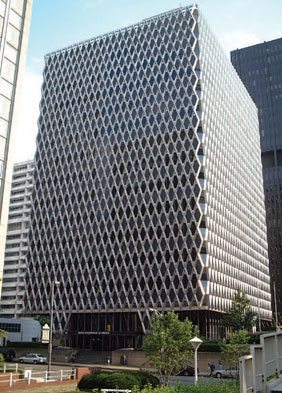 |
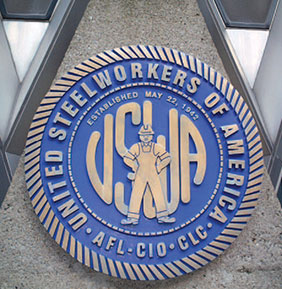 |
US Steel Workers Building in Pittsburgh, PA, more than 40 years of silicone sealant durability along metal joints. Photos Courtesy of Dow Corning Corporation |
|
Â
Helping to Achieve "Green" Building Design: Solano County Government Center, Fairfield, CACA |
| Designed to be energy smart and people friendly, the LEED-certified Solano County Government Center includes the new County Administration Center, Probation Office Building and an adjacent parking structure. The six- story $113.5 million project embraces many sustainable design characteristics including extensive use of solar electricity, energy efficient technologies, and a co-generation plant that has already earned honors for renewable energy. Because of the project's strong focus on energy efficiency and environmental sensitivity, the designers and consultants on this project were especially careful to choose sealants that could provide excellent weatherproofing capabilities and outstanding life-cycle value. The double caulk joints between the windows and pre-cast concrete were filled with a medium modulus silicone sealant without a primer installed over fire rated backer rod. Silicone sealant with a +/- 50 percent movement capability was also used for end dams, internal sealant work, the punched window units and some of the curtain wall units as well. [see opening photo on page 1] |
Â
Problem Remediation and Restoration: Brighton Condos at Kingston Plantation, Myrtle, SC |
| Built in 2001, this large 21 story complex began experiencing widespread water leakage problems soon after construction. An engineering study revealed failed sealant joints filled with urethane (organic) sealant and incorrectly used silicone sealant, as well as unsealed gaps around the stucco envelope's flashing and accessory points. The stucco facing also displayed isolated hairline cracking typically found on stucco-clad buildings. After cleaning and preparing the exterior surfaces, contractors applied 100 gallons of ultra low modulus silicone sealant around balconies and in stucco surface cracks and then resealed window and stucco joints with another 300 gallons of medium modulus silicone sealant. Lastly they covered the building envelope with about 2,500 gallons of silicone surface coating, without a primer, capable of spanning cracks up to 1/16-inch, accommodate movement and maintain its durability when exposed to sunlight, rain, snow and temperature extremes. The entire remediation required six months to complete with a crew of about a dozen workers. The building owners expect to save an estimated $1 million in recoating costs over 20 years. |
Â
Survivor of the Storm:
Exchange Square, Hong Kong |
|
| In spite of tropical heat and humidity, frequent heavy rains and typhoons, and the degrading effects of air pollution, Exchange Square is a prominent and enduring feature of the Hong Kong skyline. Constructed in 1984, it was the largest structural silicone project of its time. A high modulus structural silicone sealant was used to adhere the monolithic glass to Exchange Square's massive 200 meter (656 feet) tall towers. The sealant specified was shown to have been tested in impact glazing systems for use in hurricane and blast resistant installations. For more than 20 years, these sealants have been reported to perform as reliably as the day they were installed. This is particularly significant since the warm ocean waters of the Western Pacific and the South China Sea fuel some of the most powerful typhoons on earth. One of the strongest, Typhoon York, scored a direct hit on Hong Kong in September, 1999 − 15 years after this building was constructed. Sustained wind speeds reached 93 mph and the city remained under a Number 10 storm signal alert for a record 10 hours. |  |
Exchange Square, Hong Kong Photos Courtesy of Dow Corning Corporation |
|
Â
Standing Strong on Shaky Ground: BP Exploration Alaska Building, Anchorage, AK |
|
 |
Located in an active earthquake zone the 16-story BP Exploration Alaska building stands on shaky ground. Twelve seismic events of Richter magnitude 7 or greater have occurred during its lifetime. Yet the performance of the structural silicone sealant used in its construction has remained unshakable. When the building was erected in 1983, the architects specified a durable, flexible silicone sealant that could accommodate +/- 50 percent movement. This sealant was used to attach the insulating glass panels to the Kynar® painted metal in the building's two-sided, structurally glazed unitized curtain wall system. This proved to be a wise choice since, in addition to repeated ground tremors and earthquake activity, the structure has weathered 25 years of temperature extremes (-34 to 85 °F) and an annual average precipitation rate of 16 inches. |
BP Exploration Alaska Building, Anchorage, Alaska Photos Courtesy of Dow Corning Corporation |
|
Â
Â
|

